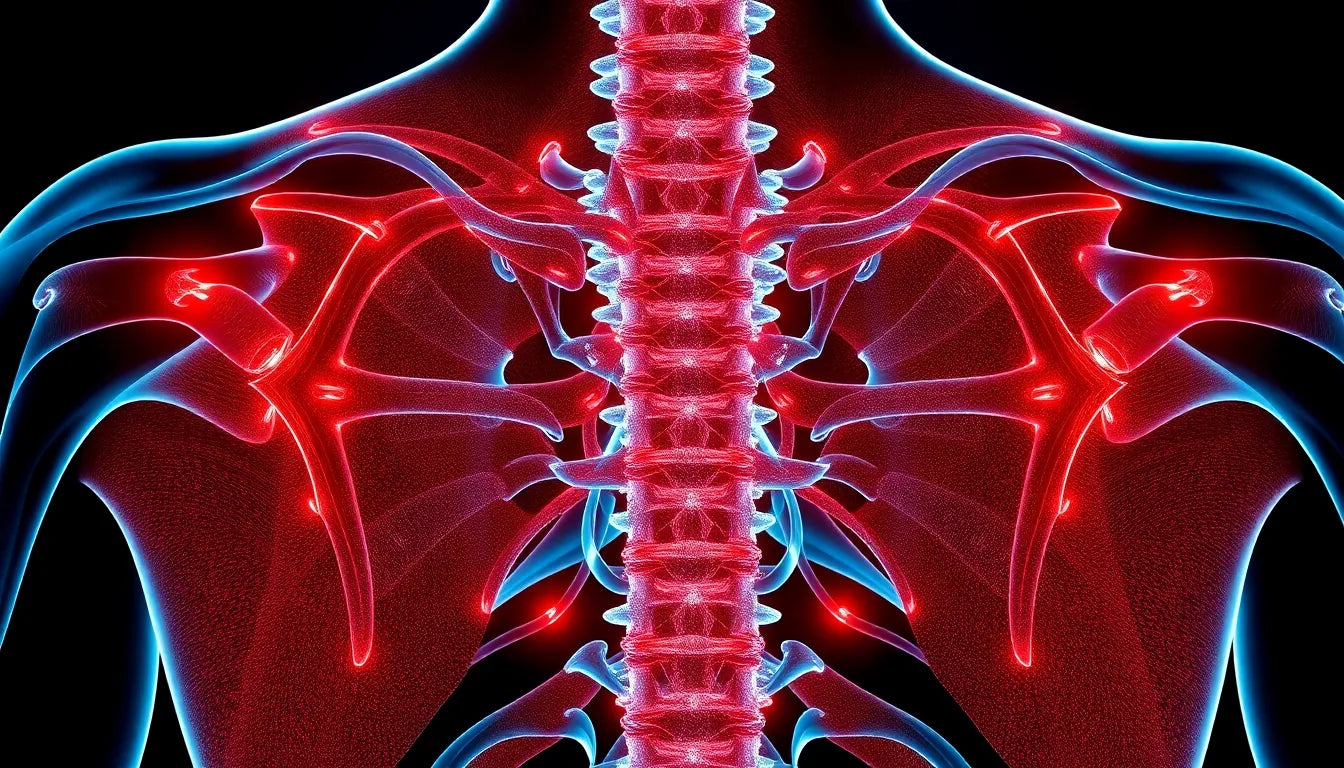Experiencing sciatic nerve pain during pregnancy is a common concern for many women, especially as they move into the second and third trimesters. This discomfort stems from the sciatic nerve, the largest nerve in the body, which runs from the lower back down to the legs. During pregnancy, various physical and hormonal changes can contribute to sciatic nerve pain, making it a prevalent issue that requires attention and management.
Understanding sciatic nerve pain in pregnancy
As the pregnancy progresses, the growing uterus can exert pressure on the sciatic nerve, leading to pain that radiates from the lower back down to the legs. This is often exacerbated by hormonal shifts, particularly the release of relaxin, which loosens the ligaments in the pelvic area to prepare for childbirth. These changes can alter a woman's posture and shift her center of gravity, further contributing to the compression of the sciatic nerve.
While the physical demands of a growing belly are significant, these hormonal changes play a crucial role in the development of sciatica during pregnancy. The combination of these factors can lead to discomfort and pain, which may interfere with daily activities and overall quality of life.
The importance of addressing sciatic pain
Ignoring sciatic nerve pain during pregnancy is not advisable, as it can significantly affect a woman's ability to perform everyday tasks and enjoy her pregnancy. The pain can range from a mild discomfort to a debilitating ache that hampers movement and sleep. This discomfort can lead to increased stress and anxiety, impacting both physical and emotional well-being.
Addressing sciatic pain is essential for maintaining a healthy and comfortable pregnancy. Implementing safe and effective pain management strategies can greatly improve a pregnant woman's quality of life. These strategies not only provide relief but also ensure that the body remains as healthy and prepared as possible for childbirth.
As we delve further into the causes, symptoms, and relief options for sciatic nerve pain during pregnancy, it becomes clear that a proactive approach is vital. By understanding the underlying factors and exploring various treatment options, pregnant women can find the comfort they need to navigate this special time in their lives with greater ease and confidence.
Causes and symptoms of sciatica during pregnancy
The onset of sciatic nerve pain during pregnancy is primarily attributed to two main factors: mechanical pressure and hormonal changes. As the uterus expands, it can press against the sciatic nerve, causing discomfort that radiates from the lower back down to the legs. This pressure is often most pronounced in the second and third trimesters, when the baby's growth is most rapid.
Hormonal changes also play a significant role. The hormone relaxin, which helps to loosen ligaments in preparation for childbirth, can inadvertently lead to instability and misalignment in the pelvic area. This instability can increase the likelihood of nerve compression, resulting in pain. Common symptoms of sciatica during pregnancy include sharp or burning pain, numbness, tingling sensations, and difficulty with movement, particularly when walking or sitting for extended periods.
Treatment and relief options
Physical therapy and exercise
Physical therapy is often the first line of defense against sciatic nerve pain during pregnancy. Therapists can recommend pregnancy-safe exercises that strengthen the muscles supporting the back and pelvis, helping to alleviate nerve pressure. Simple exercises like pelvic tilts and gentle stretches can be highly effective. Pelvic tilts, for instance, involve lying on your back with knees bent and gently tilting the pelvis upwards, which can help relieve tension in the lower back.
Heat and cold therapy
Applying heat or cold to the affected area can provide significant pain relief. Heating pads or hot showers can help relax tight muscles, while cold packs can reduce inflammation and numb sharp pain. Alternating between heat and cold therapy can also be beneficial, as it helps to promote circulation and healing.
Massage and alternative therapies
Prenatal massage is another effective way to manage sciatic nerve pain. It can help to relax tense muscles and improve circulation, reducing pressure on the nerve. However, it is important to ensure that any massage or alternative therapy is specifically designed to be safe during pregnancy. Aquatic therapy, where exercises are performed in water, can also be beneficial due to the buoyancy that reduces pressure on the joints and nerves.
Lifestyle adjustments
Making certain lifestyle adjustments can significantly alleviate sciatic nerve pain. Using supportive pillows while sleeping can help maintain proper spinal alignment, reducing nerve compression. Maintaining good posture throughout the day is crucial, as it helps to distribute weight evenly and reduces strain on the lower back. Additionally, wearing comfortable footwear with adequate support can prevent further aggravation of the sciatic nerve.
It is also advisable to avoid prolonged periods of standing or sitting. Taking regular breaks to move around can prevent stiffness and reduce nerve pressure. These adjustments are simple yet effective ways to manage pain and improve comfort during pregnancy.
By understanding the causes and symptoms of sciatic nerve pain during pregnancy and exploring safe treatment options, women can find relief and enjoy a more comfortable pregnancy experience. It is always recommended to consult with a healthcare provider before starting any new treatment or exercise regimen to ensure it is appropriate for your specific situation.
Additional strategies for relieving sciatic nerve pain during pregnancy
Beyond the commonly recommended therapies, there are additional strategies that can offer relief from sciatic nerve pain during pregnancy. These methods focus on reducing pressure on the sciatic nerve and improving overall comfort.
Swimming and aquatic therapy
Swimming is an excellent low-impact exercise that can help alleviate sciatic nerve pain. The buoyancy of water supports the body, reducing pressure on the sciatic nerve and allowing for gentle movement without strain. Aquatic therapy, which involves performing exercises in water, can also be beneficial. This form of therapy not only eases pain but also enhances flexibility and strength, making it a suitable option for pregnant women seeking relief.
Stretching routines
Incorporating specific stretching routines into your daily regimen can significantly reduce sciatic pain. Pregnancy-safe stretches, such as the piriformis stretch and table stretch, target the muscles around the sciatic nerve, helping to relieve tension and improve flexibility. To perform the piriformis stretch, sit on a chair and place one ankle over the opposite knee. Gently lean forward until a stretch is felt in the buttocks, holding this position for 30 seconds. The table stretch involves standing with feet hip-width apart and bending forward to place hands on a table, keeping the back straight to stretch the lower back and hamstrings.
Pain medication
While non-pharmacological methods are preferred, some women may require medication to manage severe sciatic pain. Acetaminophen is generally considered safe for use during pregnancy and can help alleviate discomfort. However, it is crucial to avoid nonsteroidal anti-inflammatory drugs (NSAIDs) unless specifically advised by a healthcare provider, as they can pose risks during pregnancy. Always consult with a healthcare professional before taking any medication to ensure it is appropriate for your situation.
Prognosis and long-term management
For most women, sciatic nerve pain improves after childbirth as the physiological pressures that cause nerve compression are relieved. However, maintaining healthy habits postpartum is essential for managing any lingering symptoms. Continuing with exercises, stretches, and lifestyle adjustments can help strengthen the muscles supporting the back and pelvis, reducing the likelihood of future sciatic pain. Additionally, seeking guidance from a healthcare provider or physical therapist can ensure that any ongoing issues are addressed effectively.
Frequently Asked Questions
What is the sciatic nerve and why does it cause pain during pregnancy?
The sciatic nerve is the largest nerve in the body, running from the lower back down the legs. During pregnancy, it can become compressed due to the growing uterus and hormonal changes, leading to pain.
Are there any exercises I should avoid during pregnancy if I have sciatica?
Yes, avoid exercises that involve heavy lifting, twisting, or high impact. Focus on low-impact activities and consult with a healthcare provider for personalized advice.
Can sciatica affect my delivery or labor process?
Sciatica itself does not typically affect delivery, but managing pain effectively can lead to a more comfortable pregnancy and labor experience.
When should I seek medical attention for sciatic pain during pregnancy?
Consult a healthcare provider if the pain is severe, persistent, or accompanied by other concerning symptoms like loss of bladder control.
Is it safe to use a heating pad during pregnancy for sciatic pain?
Yes, using a heating pad on a low setting can be safe, but always check with your healthcare provider to ensure it is appropriate for your specific situation.
Sources
- UT Southwestern Medical Center. "Sciatica During Pregnancy: Causes and Treatments."
- WebMD. "Managing Sciatic Nerve Pain During Pregnancy."
- Walnut Hill OBGYN. "Comfort Solutions for Sciatica in Pregnancy."
- HSSH Health. "Holistic Management of Sciatica in Pregnancy."
- Healthline. "Sciatica During Pregnancy: Symptoms and Stretches."
- Cleveland Clinic. "Sciatica and Pregnancy: What You Need to Know."


















